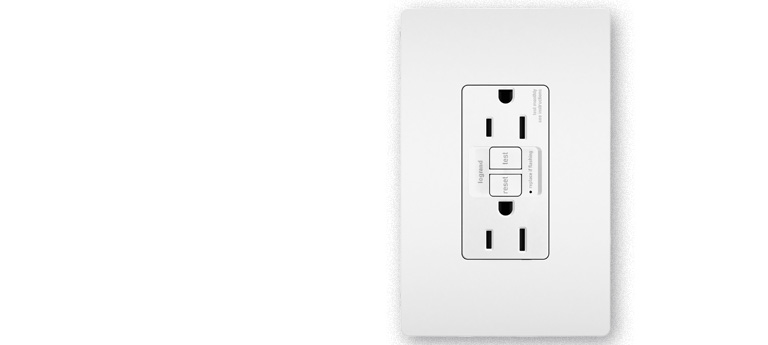In the average American home, there are 75 electrical outlets. While most of these are typical three-prong, 15-amp outlets, there are many other options. If you want to work in electrical construction and maintenance, you will need to understand each of these commonly used electrical outlets and their applications. At Coyne College in Chicago, we have electrical programs to teach you everything you need to know for a career as an electrician.
The Most Common American Outlets
There are six major types of outlets you can expect to find in most homes. While not every home has all of these, nearly all have at least a couple of these options. Anyone working in the electrical field needs to be very familiar with these common types.
2-Prong Outlets
This type of outlet is very common in older houses but almost non-existent in new buildings. It is a 15-amp, 125-volt outlet that takes two wires on an ungrounded circuit. Since it lacks a ground wire, it is significantly less safe than the superior three-prong option. Furthermore, it is quickly becoming obsolete due to modern building codes. Expect to have to replace these in renovation jobs.
3-Prong Outlets
This is without a doubt the most common outlet in modern homes. It replaced the two-prong alternative as the go-to outlet for general electrical usage. It also is a 15-amp, 125-volt outlet but it has a third prong for grounding. It is significantly safer than the older version and is compliant with modern building codes.
GFCI Outlets
Ground fault circuit interrupter outlets are a shockingly safe choice of outlet. It is often used in kitchens, bathrooms and anywhere that the outlet may be near water. The outlet monitors the electrical flow in the circuit. If the current spikes or leaks, the GFCI outlet will interrupt the current to avoid a hazard. The outlet features two buttons for testing and resetting the interrupter.

AFCI Outlets
An arc fault circuit interrupter looks very similar to a GFCI outlet. Its purpose is to protect against arcs when electricity jumps from one wire to another. Arcing is a fire hazard, so this typica of circuit protection is important. In modern construction, AFCI circuits are built into the breaker. However, on older homes, this technology can be added using a special outlet.
20-Amp, 125-Volt Outlets
Many large appliances need a 20-amp current to operate. These are especially common for refrigerators and laundry machines. They are similar to the three-prong, 15-amp outlets but have a horizontal or T-shaped pin on the left. This helps prevent people from plugging items into the wrong type of outlet.
20-Amp, 250-Volt Outlets
These outlets are similar to the 125-volt ones used for appliances, but they have an even higher voltage. They look very similar and are sometimes used for tools such as air compressors. In a home, these outlets are usually installed by hobbyists for their shops. However, they are also common in commercial spaces.
Switch and Outlet Combinations
Unlike the other options above, this doesn’t offer any sort of electrical benefits or drawbacks. Instead, this marvelous multi-tasker allows the addition of a switch or outlet to a receptacle. Rather than having to add wiring to put a switch in the wall, an outlet can be converted to have an integrated switch. This is great for use in new bedrooms or to help make a room more practical.
Newer Types of Outlets
Many homes are adopting newer types of electrical outlets. These alternatives offer special features that are more convenient for modern living. Many of them can be installed without at most basic wiring work. If working a new construction job, it is likely that at least one of these could be requested. This is even more likely on a renovation job for the homeowner.
Recessed Outlets
The connection point on these outlets is recessed into the box rather than flush with the wall plate. This means that electronics can be plugged in with less cable protruding. The end result is that less space needs to be allowed behind furniture to plus items in. This is popular in living rooms and other places with outlets typically hidden behind furniture.
Temper Resistant Receptacles
These receptacles are now required by building codes in many areas. They have a special barrier than stops objects from being inserted to them by children. It is a similar concept to plastic outlet plug covers but more effective. The barrier can only be pushed aside by a plug or similar object. This is very effective in preventing accidental insertions.
USB Outlets
These outlets have USB charging ports integrated into them. They are growing very popular thanks to the prevalence of USB-charged smartphones, tablets and other devices. The key advantage is that the charging cable does not take up an outlet.
LED Outlets
This style of outlet has a built-in LED that can act as a nightlight. Many people find this convenient for young children or for providing minimal lighting in bathrooms and other areas that may need to be reached at night.
Learn More About Outlets and Other Electrical Components
Working in the electrical construction and maintenance field can be very rewarding. However, it is important to learn the trade if you want to land a good job. If you are thinking about going to trade school, consider Coyne College in Chicago.
Our electrical programs can help you learn all about wiring houses and other properties. This could be your first step towards a bright future. Contact us today to learn about enrolling at Coyne College.


